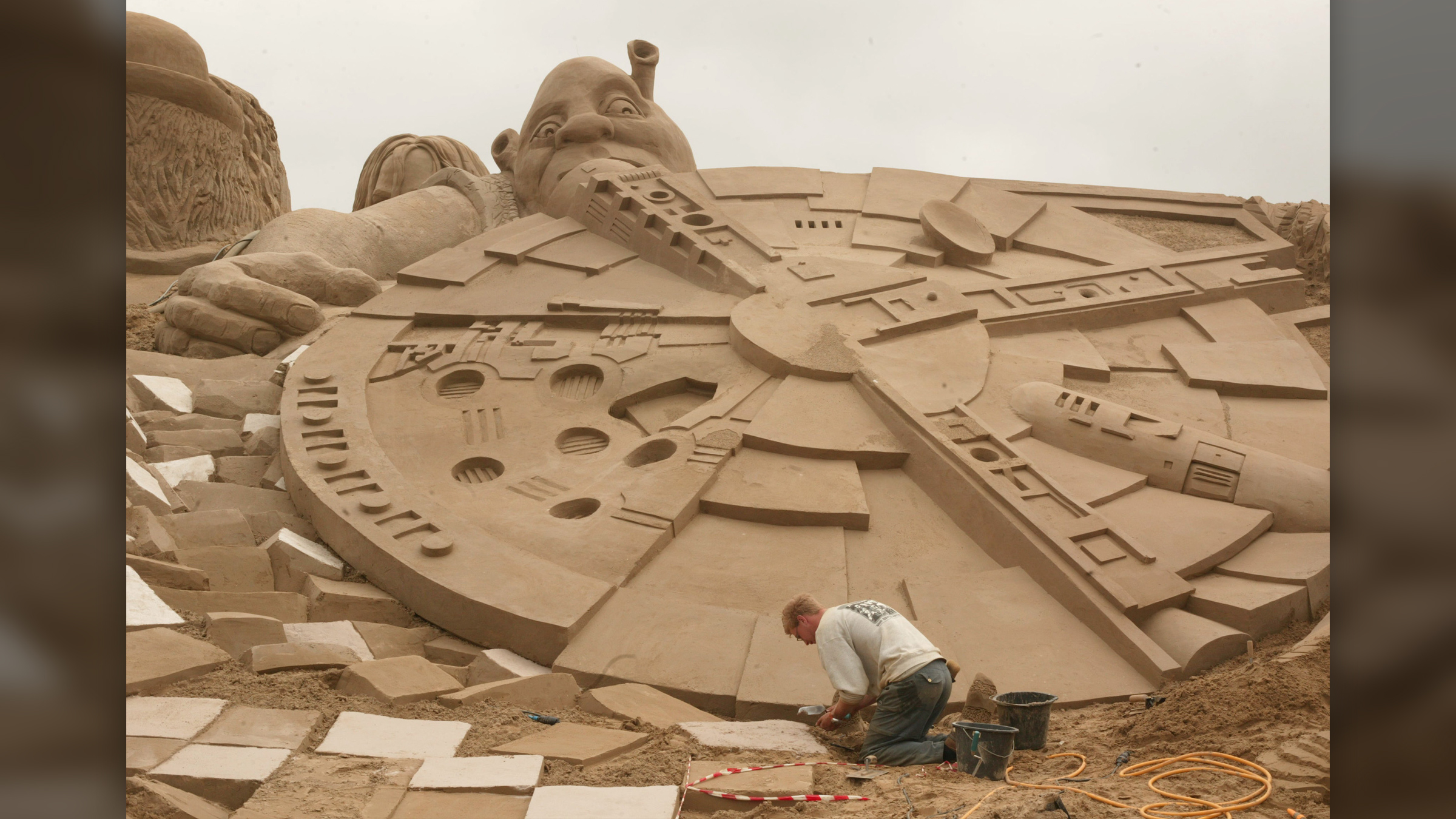
How do sandcastles stay together?
How can you get the right mixture of sand, water and air for your sandcastle?

Despite sand's crumbly nature, the world's tallest sandcastle to date — built in Blokhus, Denmark, in 2021 — stood a staggering 69 feet, 5 inches (21.16 meters) high, according to Guinness World Records.
But how do sandcastles stay together? It requires the right mix of sand, water and air.
Sand is made of particles of minerals ranging in diameter from 0.003 to 0.187 inch (0.075 to 4.75 millimeters), according to Joseph Scalia, a geotechnical engineer at Colorado State University. Particles smaller than that are known as clay or silt, while larger particles are classified as gravel.
Although sand gives a sandcastle its structure, water holds it together.
"If you add a little water to dry sand, the water adheres to the surface of the grains, and forms small bridges of water where the grains make contact," Jim Best, a sedimentologist at the University of Illinois Urbana-Champaign, told Live Science.
Related: Why is it so hard to walk on sand?
The strength of these bridges is governed by the surface tension of water — the same property that compels water droplets to bead up into the most compact shapes possible. Molecules in liquids can stick to one another more tightly than they do to other things, making the surfaces of these liquids act like flexible membranes that can be surprisingly strong.
Sign up for the Live Science daily newsletter now
Get the world’s most fascinating discoveries delivered straight to your inbox.
When there is enough space between the grains for air, water bridges can form in these air-filled pores to hold the sand together with suction. "The sand grains are essentially pulled together by the influence of surface tension," Best said.
If there's too little water, the sandcastle will crumble, because it lacks enough bridges to hold the grains together. However, with too much water, the pores — and thus the bridges — will vanish, and the sand will become a slurry, Best said.

The perfect sandcastle has a specific recipe: One part water for every eight parts dry sand, according to experiments that Matthew Bennett, a sedimentologist at Bournemouth University in England, and his colleagues performed in 2004. At the beach, sand with the right amount of moisture is usually near the high-tide line, often marked by a line of seaweed and flotsam, when the tide is low and the sand is still visibly wet, Bennett he noted in The Conversation.
Another way to help sandcastles survive is to use angular grains with sharp corners. "Imagine if the sand grains were all perfectly spherical — small, sand-sized balls," Best said. "They wouldn't be able to arrange themselves so close together and would be less stable than grains that are more angular."
The close fit between angular sand grains increases the impact of the water surface tension. In addition, more-angular grains interlock more, and the resulting resistance from friction helps keep sandcastles from collapsing, Best said.
This means the best sand for sandcastles is not usually found on coastal beaches, Scalia wrote in The Conversation. More-angular grains may be found in river sand that washed down from mountains, as they have not yet had their corners eroded by wind and water.
In addition, "professional sandcastle builders will add a small fraction of clay to the sand so the sandcastles will last for a long time," Xiong Zhang, a geotechnical engineer at the Missouri University of Science and Technology, told Live Science.
With clay particles that are smaller than sand grains, the smaller ones can fit within the pores between the larger ones. This leads to more water bridges for sturdier construction, Scalia explained.
This is also why compressing wet sand together makes sandcastles sturdier, Scalia added. Compaction also helps angular grains interlock to increase the strength of the sand as a whole, he noted.
Eventually, sandcastles will dry out, but salt from seawater can help keep them standing, Best said. As seawater evaporates, the salt can form crystals that can stabilize the structures. However, they will be fragile. These sands will crack easily," Best said.











